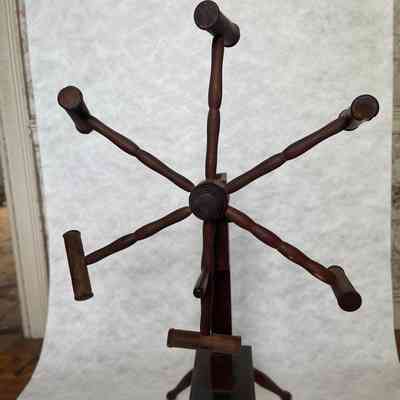Winder

Today, one might not think of all the work that goes into textile production. But for most of history, homemade clothes and repairs to said clothes were the norm. People often rely on their skills and tools to produce garments or mend worn-out ones. Tools such as a yarn winder would have been essential in these home-based textile operations, and a family such as the Lotts, who likely engaged in some form of domestic textile production, would have made great use of it. A yarn winder, typically made of wood, was an indispensable tool for winding yarn into neat, uniform skeins or hanks. Its design often resembled a ship's wheel, with a central axis and spokes radiating outward. This wheel-like shape helped evenly distribute the yarn as it was wound, ensuring that the skeins were consistent and easy to handle. To operate a yarn winder, one would place a ball of yarn or thread on the spool at the center of the device. By turning the wheel, the yarn would wind onto a peg or spindle arranged in a circular pattern. The wheel's movement was manual, usually powered by the operator's hand, and as the wheel turned, the yarn would wrap around the pegs in a controlled manner. This allowed for a steady and uniform winding of yarn and made it easier to measure and organize large amounts of yarn needed for weaving or knitting. After winding, the yarn could be easily removed and tied off into a skein for storage or immediate use. It was easy to use, requiring no more than basic mechanical knowledge. Additionally, it was a tool that could be easily maintained or repaired, as it was mostly made from durable yet workable materials like wood. For a household engaged in textile production, especially in the 19th century before industrialization took over, this tool helped streamline an important step in turning raw fiber into the final fabric. Whether for making clothing, blankets, or other fabric items, a yarn winder would have been indispensable to a family like the Lotts, supporting their self-sufficiency in a world where homemade textiles were a central part of daily life.
